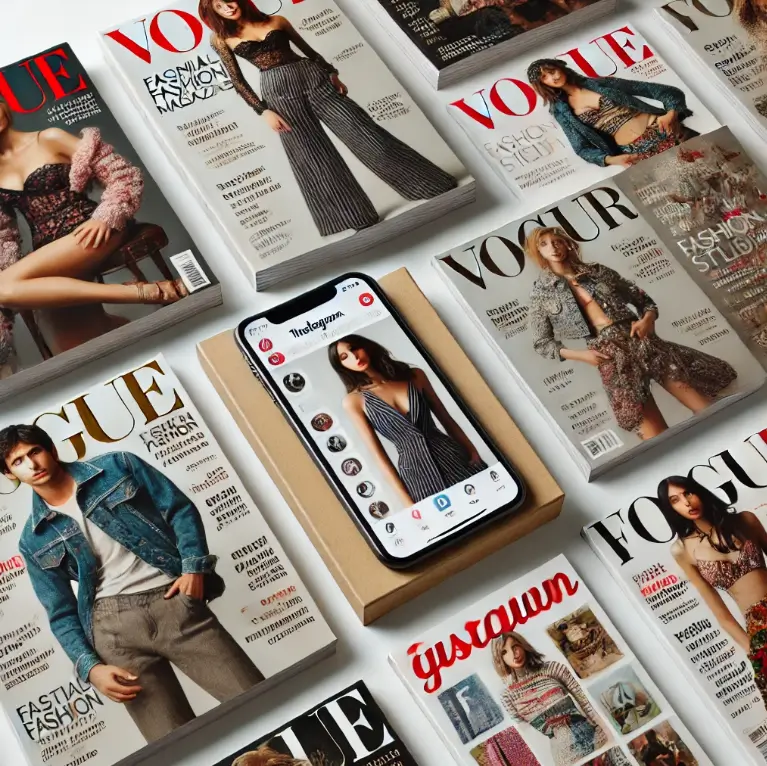
The fashion industry is supported by numerous interconnected sectors, but none is more influential on consumer perception and behavior than the media. From traditional print magazines to cutting-edge digital platforms, consumer publications and media have played a crucial role in shaping how fashion is consumed, perceived, and marketed. In this article, we’ll explore how consumer publications, media, and emerging technologies have evolved to serve the fashion industry, using key examples to show their impact on consumer behavior.
Early Fashion Publications and Their Influence
The first significant fashion publication was Vogue, launched in 1892, which set the precedent for fashion magazines worldwide. Vogue didn’t merely showcase clothing; it created a narrative around fashion, associating it with luxury, culture, and high society. This connection helped drive consumer desire by associating the latest trends with aspirational lifestyles. Vogue became a cultural touchstone, helping consumers stay updated on emerging trends and fostering their appetite for new fashions.
In the 1930s, other magazines began to target niche consumer groups. For example, Mademoiselle (1935) and Glamour (1939, originally Glamour of Hollywood) catered specifically to young, stylish women, particularly college students and working professionals. They were not only fashion guides but also lifestyle handbooks, offering beauty tips, career advice, and relationship insights. By focusing on a specific demographic, these magazines were able to build a loyal audience and significantly influence purchasing decisions.
For men, Esquire (launched in 1933) was groundbreaking. It offered more than just fashion advice; it addressed the modern man’s lifestyle, covering everything from grooming and fitness to politics and culture. This comprehensive approach made fashion feel more accessible and essential to the male consumer, challenging the idea that fashion was only a woman’s domain.
How Print Magazines Shaped Consumer Behavior
Print fashion magazines dominated the industry for decades, and their glossy pages filled with high-fashion editorials, designer advertisements, and trend guides directly impacted consumer behavior. Each issue would influence what people wore, the brands they chose, and even how they viewed themselves. For example, the September issue of Vogue remains an iconic publication, often featuring over 600 pages of fashion content, offering insight into upcoming seasonal trends.
Fashion magazines also set the stage for creating “must-have” items. For instance, after a designer dress was featured in a high-end magazine, consumers were driven to buy it, turning the product into an instant sensation. This led to the rise of “It” items like the Birkin bag by Hermès or the Dior Saddle Bag, which were heavily advertised and showcased in fashion magazines.
Another example is the impact of Twiggy in the 1960s, a British model whose androgynous look became synonymous with the mod fashion movement. Magazines like Vogue and Elle heavily featured Twiggy, influencing the fashion tastes of an entire generation, leading to a spike in demand for the mini-skirt and other mod fashion staples.
The Transition to Digital Fashion Media
The digital revolution of the early 2000s began to change the landscape of fashion media. With the rise of the internet, consumers no longer needed to wait for the next issue of their favorite magazine to learn about the latest trends. Fashion publications began to transition online, allowing consumers instant access to runway shows, designer collections, and editorial content.
Vogue.com was one of the first traditional fashion magazines to adopt a digital format, ensuring it remained relevant in an increasingly digital world. Consumers could now watch Fashion Week shows live, read interviews with designers, and shop the latest trends instantly from their devices. This shift from print to digital allowed consumers to engage with fashion in a more interactive and personalized way.
One of the most notable examples of digital fashion media is Instagram, which has transformed from a simple photo-sharing app into a major player in fashion communication. Brands and designers now use Instagram to debut collections, announce collaborations, and engage directly with their audience. Fashion influencers on Instagram, such as Chiara Ferragni and Aimee Song, have become powerful marketing tools, often able to generate more consumer engagement than traditional magazines.
Additionally, platforms like Pinterest and Issuu have democratized access to fashion inspiration. On Pinterest, users create “fashion boards,” where they can pin looks from various designers, blogs, and influencers, effectively curating their own personalized fashion magazines. Issuu allows anyone to publish digital fashion magazines, breaking down the barriers between professional media and user-generated content.
The Role of Influencers and Social Media in Fashion Media
In the modern fashion media landscape, social media influencers play a critical role. These individuals often have millions of followers on platforms like Instagram, YouTube, and TikTok, and their endorsement of a brand or trend can have a profound impact on consumer behavior. Unlike traditional media, which was often detached from its audience, influencers engage directly with their followers, fostering a sense of trust and authenticity.
For example, Kim Kardashian’s Skims brand leveraged her massive social media following to gain traction. By promoting her shapewear line to millions of fans on Instagram, Skims experienced immediate success, selling out within minutes of its launch.
Similarly, Zara is known for its adept use of social media to engage consumers. Zara’s approach to “fast fashion” means that they can quickly respond to emerging trends, and they use platforms like Instagram to advertise new arrivals. Consumers, in turn, feel they are receiving exclusive and up-to-date fashion news, fostering brand loyalty and encouraging repeat purchases.
Conclusion: The Ever-Evolving Fashion Media Landscape
From its early days as a tool for delivering high-fashion editorials to the rise of digital platforms and social media influencers, fashion media has evolved dramatically. While print magazines like Vogue and Glamour still play a role, the power has shifted toward digital platforms that allow for real-time updates, personalized content, and direct consumer engagement. As technology continues to evolve, fashion media will remain a dynamic force, constantly adapting to meet the changing needs of consumers.
Share Button






